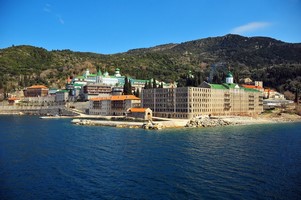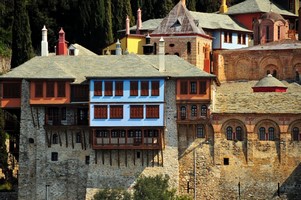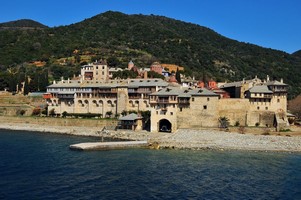 |
 |
 |
Maybe unique all around the world, Mt. Athos is vival museum. It is an 'Autonomous Monastic State' in Greece, at the Peninsula of Mountain Athos in Halkidiki, considered as the center of Orthodox monasticism. The Peninsula is covered by Mt. Athos, with an altitude of 2033 m; hence its name. However, the prevalence of its name seems to have happened during the first half of the 20th century, particularly in a Golden bull letter of the emperor, Alexios 1st Komnenos to the Holy Monastery of Megisti Lavra in 1144 in which he recognized it definitely and formally and so the new name was imposed. Mt. Athos is a self administered and autonomous part of the Greek state, it belongs, politically to the Ministry of Foreign Affairs and spiritually under the Ecumenical Patriarchate of Constantinople. It consists of 20 Monasteries and some other monastic settlements that surround them.
It is widely known that in Mt. Athos are kept many relics, priceless treasures, holy sceletings and miraculous icons. The architecture of these monasteries is also really remarkable. The combination of all these characteristics, and its uniqueness attract many pilgrims.
The entrance to Mt. Athos, or otherwise 'The Garden of Virgin Mary' is forbidden to women. For men entrance is permitted only after a specific procedure in order to get specific license, in order to travel to Mt.Athos. Women can have a ship cruise around the Holy Mountain by taking one of the ships starting from Ouranoupolis' port every morning around 10a.m.
